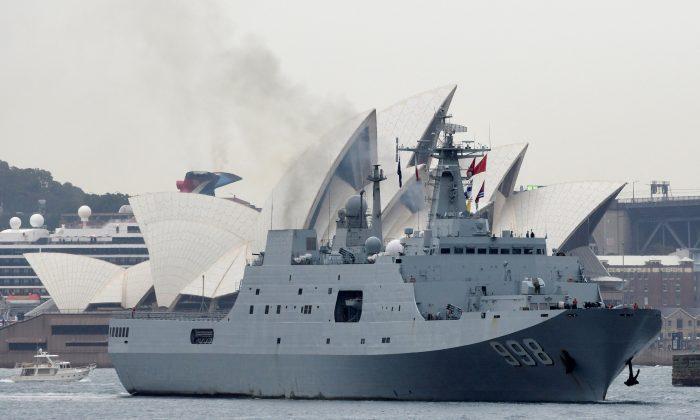SYDNEY—Three Chinese warships sailed out of Sydney on June 7 after an unannounced visit that came amid a tussle for influence between Australia and China in the Pacific.
The show-of-force call by a frigate, supply ship and amphibious warfare vessel was planned but never announced by Canberra.
“That raised a lot of hackles,” John Blaxland, professor of international security and intelligence studies at the Australian National University in Canberra, told the Australian Broadcasting Corporation on Friday.
“The ships arrived off Darling Point and other famous places in Sydney’s harbor without people knowing in advance ... and with armed soldiers and sailors on the decks of the ships looking fairly aggressive.”
They left for China under leaden skies in the early afternoon.
The warships had arrived on the eve of the 30th anniversary of China’s bloody crackdown on pro-democracy protesters in and around Tiananmen Square on June 4, 1989. Photos showed members of the Chinese community waiting at the navy wharf where the ships docked to greet the sailors.
“It was a reciprocal visit because Australian naval vessels visited China,” Australian Prime Minister Scott Morrison told reporters in the Solomon Islands’ capital Honiara this week.
“So it may have been a surprise to others, but it certainly wasn’t a surprise to the government.”
Australia has offered diplomatic support to U.S. “freedom of navigation” voyages through the South China Sea.
China has become increasingly active in the South Pacific, providing infrastructure projects, aid, and funding for small, developing island nations.
China’s commitment of $1.8 billion to the region by June 2016 is dwarfed by Australia’s $7.7 billion contributions, according to research by Australian think tank, the Lowy Institute, but China’s investments have raised Australia’s hackles at the prospect of eroding its own long-time influence.





